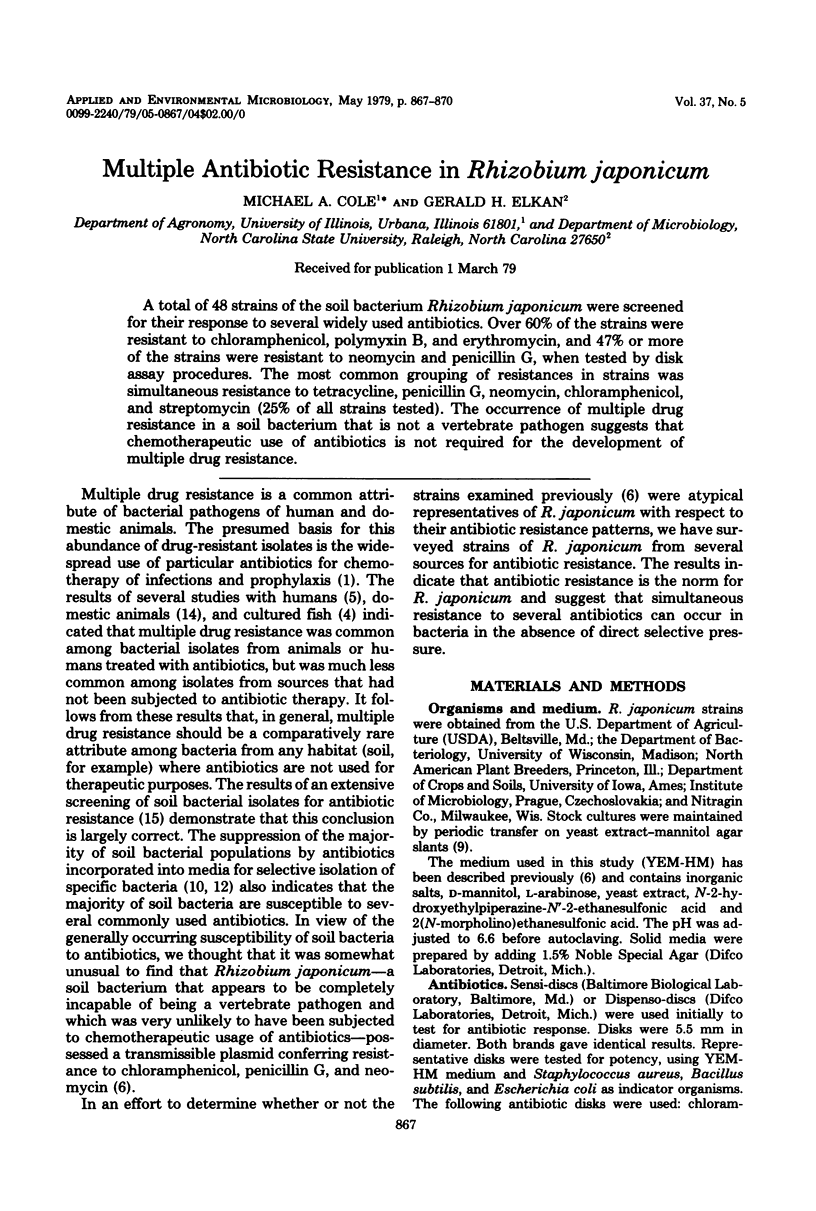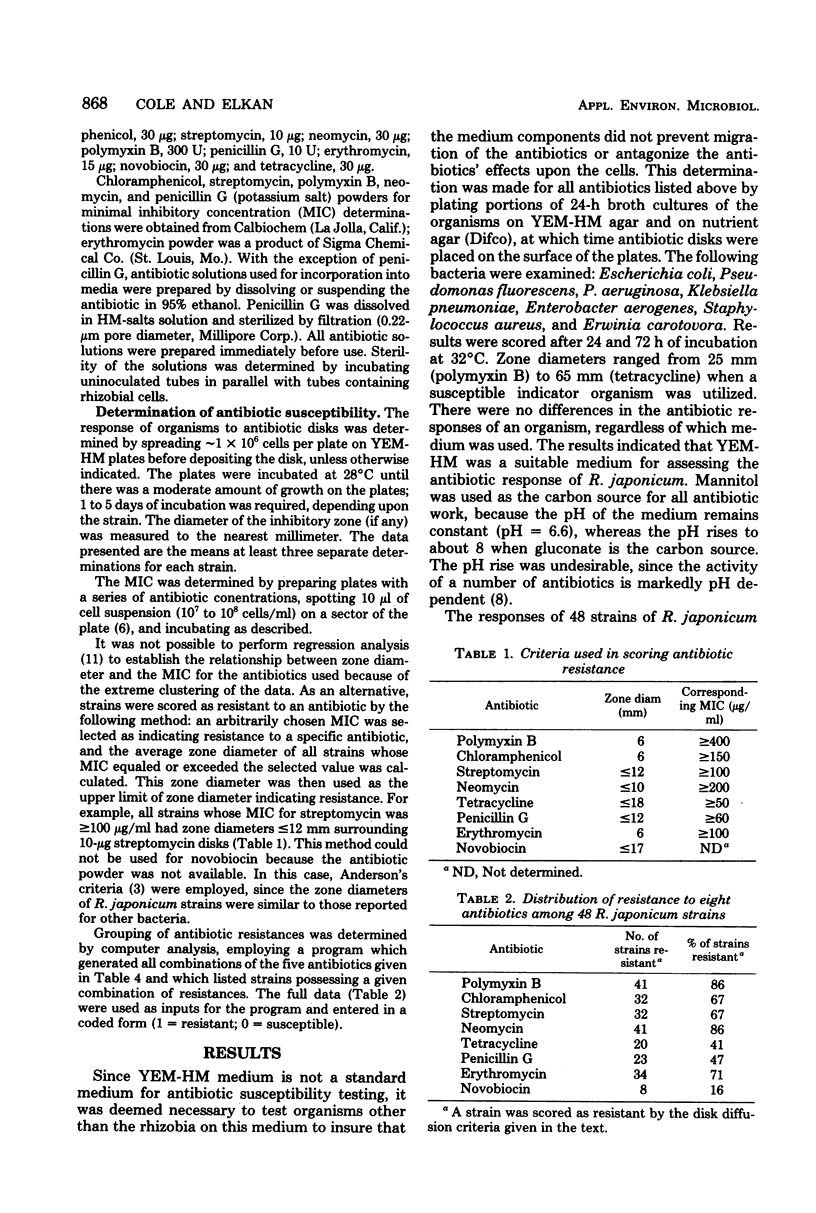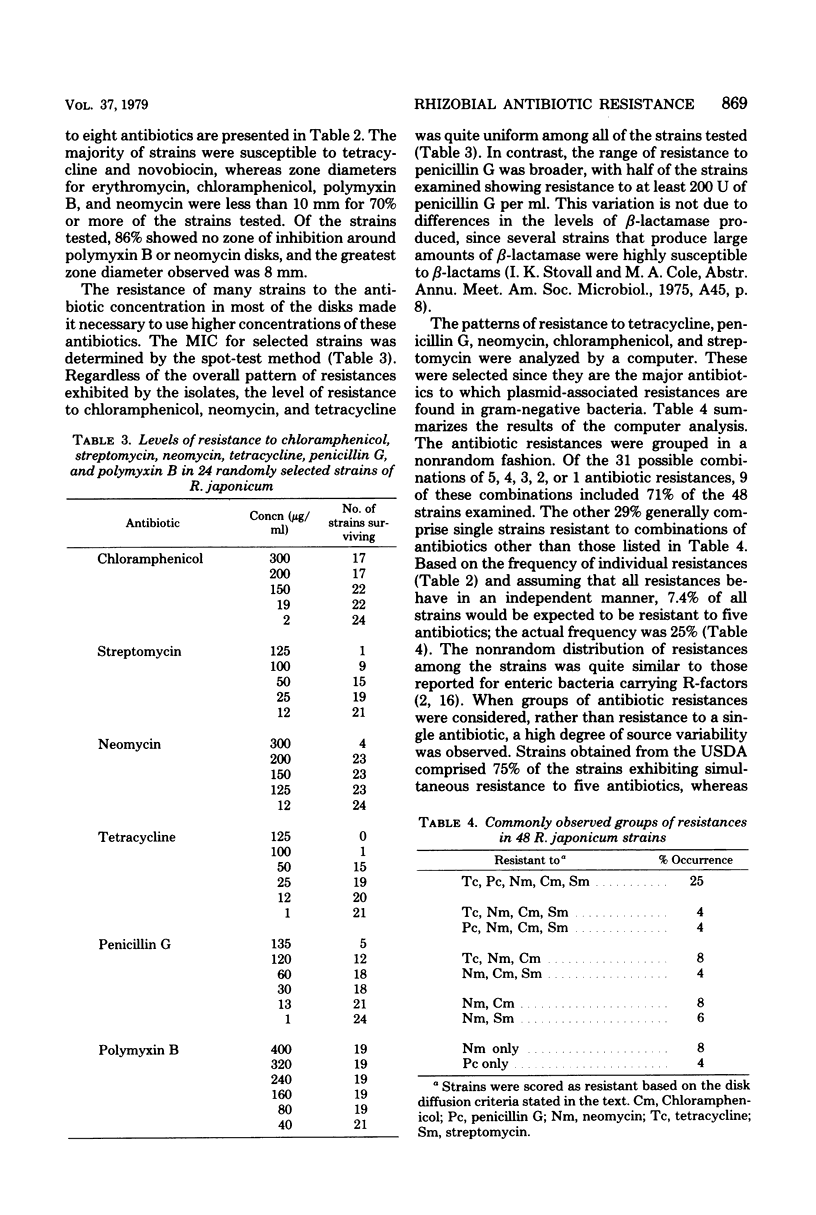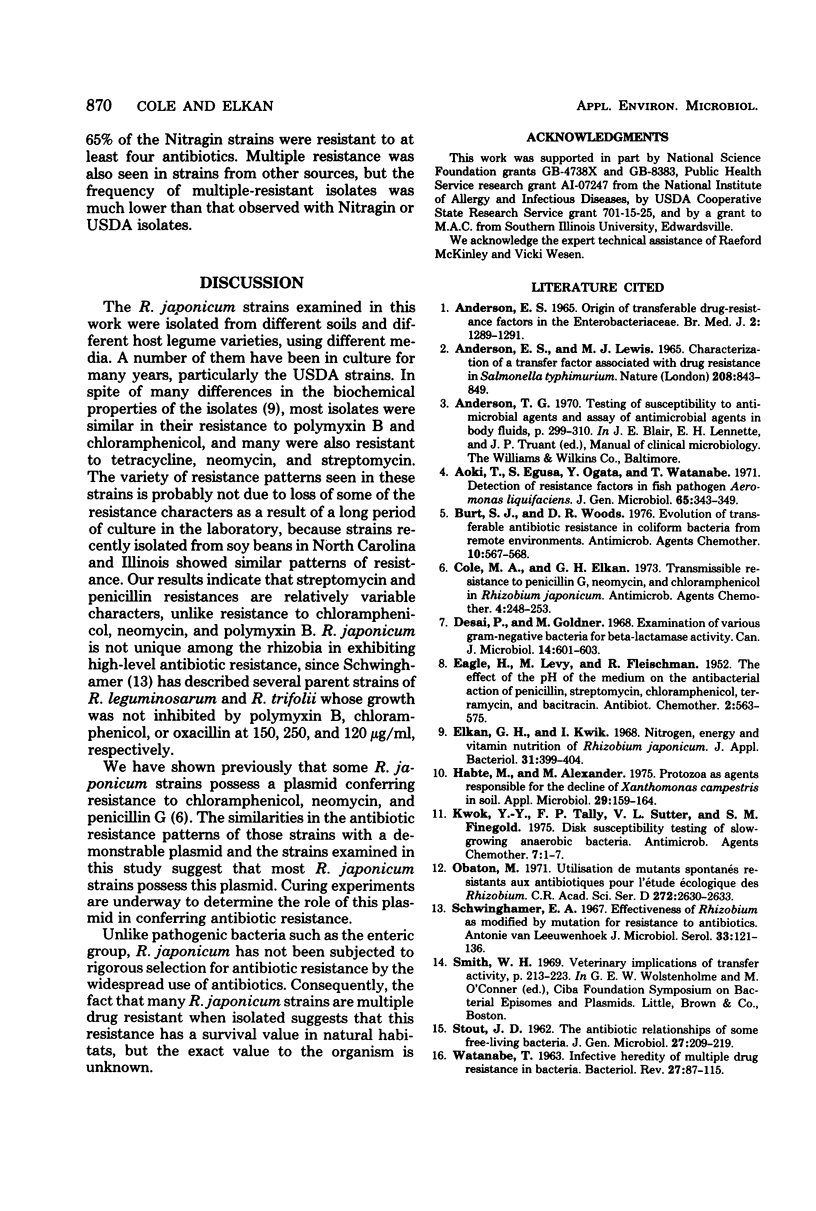Abstract
A total of 48 strains of the soil bacterium Rhizobium japonicum were screened for their response to several widely used antibiotics. Over 60% of the strains were resistant to chloramphenicol, polymyxin B, and erythromycin, and 47% or more of the strains were resistant to neomycin and penicillin G, when tested by disk assay procedures. The most common grouping of resistances in strains was simultaneous resistance to tetracycline, penicillin G, neomycin, chloramphenicol, and streptomycin (25% of all strains tested). The occurrence of multiple drug resistance in a soil bacterium that is not a vertebrate pathogen suggests that chemotherapeutic use of antibiotics is not required for the development of multiple drug resistance.
Full text
PDF



Selected References
These references are in PubMed. This may not be the complete list of references from this article.
- Anderson E. S., Lewis M. J. Characterization of a transfer factor associated with drug resistance in Salmonella typhimurium. Nature. 1965 Nov 27;208(5013):843–849. doi: 10.1038/208843a0. [DOI] [PubMed] [Google Scholar]
- Anderson E. S. Origin of transferable drug-resistance factors in the enterobacteriaceae. Br Med J. 1965 Nov 27;2(5473):1289–1291. doi: 10.1136/bmj.2.5473.1289. [DOI] [PMC free article] [PubMed] [Google Scholar]
- Aoki T., Egusa S., Ogata Y., Watanabe T. Detection of resistance factors in fish pathogen Aeromonas liquefaciens. J Gen Microbiol. 1971 Mar;65(3):343–349. doi: 10.1099/00221287-65-3-343. [DOI] [PubMed] [Google Scholar]
- Burt S. J., Woods D. R. Evolution of transferable antibiotic resistance in coliform bacteria from remote environments. Antimicrob Agents Chemother. 1976 Sep;10(3):567–568. doi: 10.1128/aac.10.3.567. [DOI] [PMC free article] [PubMed] [Google Scholar]
- Cole M. A., Elkan G. H. Transmissible resistance to penicillin G, neomycin, and chloramphenicol in Rhizobium japonicum. Antimicrob Agents Chemother. 1973 Sep;4(3):248–253. doi: 10.1128/aac.4.3.248. [DOI] [PMC free article] [PubMed] [Google Scholar]
- Desai P., Goldner M. Examination of various gram-negative bacteria for beta-lactamase activity. Can J Microbiol. 1968 May;14(5):601–603. doi: 10.1139/m68-100. [DOI] [PubMed] [Google Scholar]
- Elkan G. H., Kwik I. Nitrogen, energy and vitamin nutrition of Rhizobium japonicum. J Appl Bacteriol. 1968 Dec;31(4):399–404. doi: 10.1111/j.1365-2672.1968.tb00386.x. [DOI] [PubMed] [Google Scholar]
- Habte M., Alexander M. Protozoa as agents responsible for the decline of Xanthomonas campestris in soil. Appl Microbiol. 1975 Feb;29(2):159–164. doi: 10.1128/am.29.2.159-164.1975. [DOI] [PMC free article] [PubMed] [Google Scholar]
- Kwok Y. Y., Tally F. P., Sutter V. L., Finegold S. M. Disk susceptibility testing of slow-growing anaerobic bacteria. Antimicrob Agents Chemother. 1975 Jan;7(1):1–7. doi: 10.1128/aac.7.1.1. [DOI] [PMC free article] [PubMed] [Google Scholar]
- Obaton M. M. Utilisation de mutants spontanés résistants aux antibiotiques pour l'étude écologique des Rhizobium. C R Acad Sci Hebd Seances Acad Sci D. 1971 May 17;272(20):2630–2633. [PubMed] [Google Scholar]
- STOUT J. D. The antibiotic relationships of some free-living bacteria. J Gen Microbiol. 1962 Feb;27:209–219. doi: 10.1099/00221287-27-2-209. [DOI] [PubMed] [Google Scholar]
- Schwinghamer E. A. Effectiveness of Rhizobium as modified by mutation for resistance to antibiotics. Antonie Van Leeuwenhoek. 1967;33(2):121–136. doi: 10.1007/BF02045542. [DOI] [PubMed] [Google Scholar]
- WATANABE T. Infective heredity of multiple drug resistance in bacteria. Bacteriol Rev. 1963 Mar;27:87–115. doi: 10.1128/br.27.1.87-115.1963. [DOI] [PMC free article] [PubMed] [Google Scholar]


